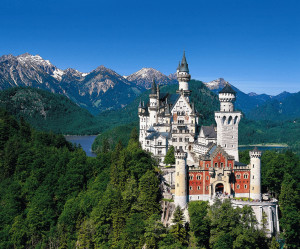
The castle of Neuschwanstein was the key Nazi repository for the greatest works of art stolen from France. It contained so many stolen works of art that it took the Monuments Men six weeks to empty it. The extreme vertical height and absence of elevators required most of the works to be carried down innumerable flights of stairs. (Robert M. Edsel and Bret Witter, The Monuments Men: Allied Heroes, Nazi Thieves, and the Greatest Treasure Hunt in History.)
On Monday, the 16th of September 1751, Christian Nagel and other male passengers aboard the Ship Nancy were taken upon arrival in the Port of Philadelphia to the office of The Worshipful, William Plumsted, Esquire, and Mayor of the City of Brotherly Love. Here the citizens Germany were required to deny their allegiance to their Homeland and swear allegiance to King George II of Great Britain. Ironically, George II was born in Hanover, one of the countries that would later comprise the German state.
Nagel, whose name meant “maker of nails”, was my only immigrant ancestor. No, I have no Native American ancestry; all the others came from Great Britain before the American Revolution when arrivals in the British colonies were simply moving to a new home. It was like moving from Greenville, Texas to Greenville, South Carolina. German ancestry is quite a coup for genealogists who have very little evidence of those Englishmen and women who braved so much to settle the American colonies.
In 1983 Julia S. Sherer of Shelbyville, Indiana composed “The Families of Henry Nail and Thomas Ray: Pioneers of Shelby County, Indiana.” In the preface, Ms. Sherer included information available only in Wurttemberg, Doffingen, and Renningen, cities in Germany.
I have always been curious how genealogists, art historians, and museums, among others, obtained old papers, paintings, sculpture and other relics after the horror of World War II. Starting on D-Day in June 1944, the Allied troops met unbelievable resistance from the German army. Not only that, Hitler and his followers were intent upon creating a museum of the finest of European Art; collected (stolen) from museums, governments, and individual collections. With the Allied Armies on the move and the German army dug in, how did this seemingly miraculous rescue occur?
Robert M. Edsel with Bret Witter asked the same question while researching a special and little known group of Allied officers and enlisted men: The Monuments Men. Consisting of men who were well over the age of most enlisted men during World War II, these soldiers were well trained in art conservation. Their stories of finding, rescuing, and saving thousands and thousands of irreplaceable art objects from the Nazis is an incredible read.
Along the way, the Monuments Men encountered a vast number of persons who divulged an assortment of tips to locating treasures, including a dentist who shared information while performing a root canal on one of the officers. There were countless objects stored and discovered in Mad Ludwig’s Castle of Neuschwanstein in the Bavarian Alps. Then there were the salt miners, most of who were members of the Nazi Party but who chose to preserve their livelihood and the artwork at Altaussee.
For a non-fiction book, The Monuments Men: Allied Heroes, Nazi Thieves, and the Greatest Treasure Hunt In History is a real page-turner. I highly recommend it. Probably, the Monuments Men found records from churches in Wurttenberg, Doffingen, and Renningen. At least, someone did and I am forever grateful.
